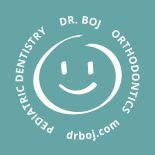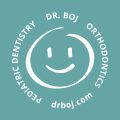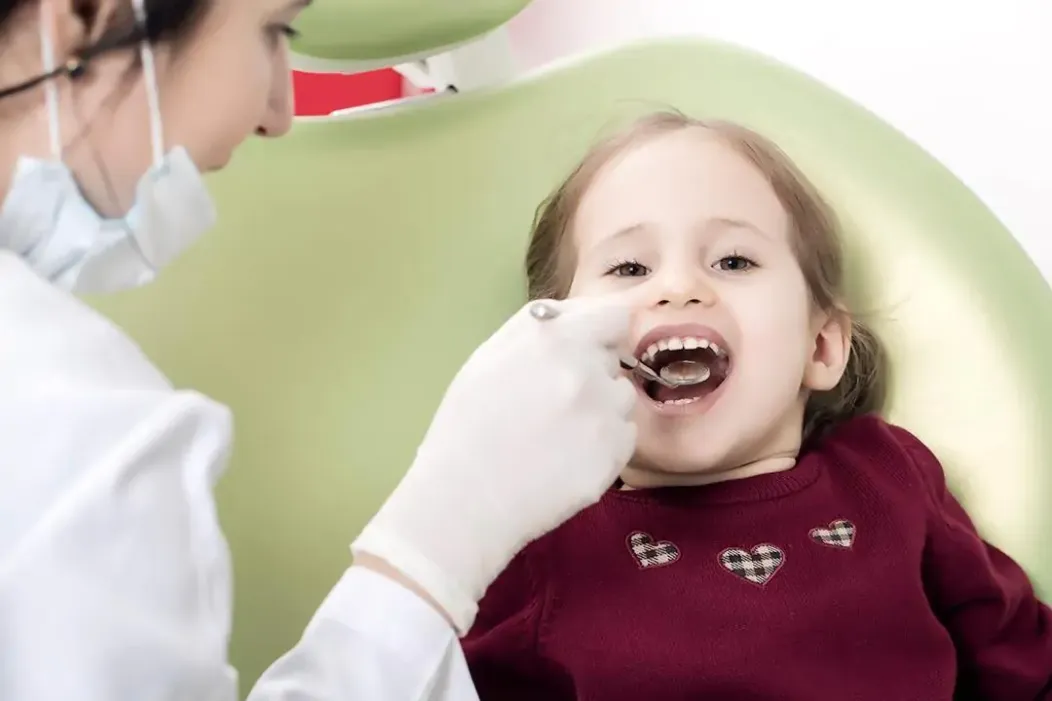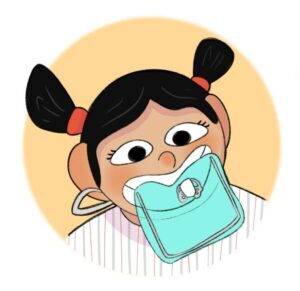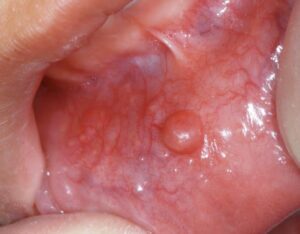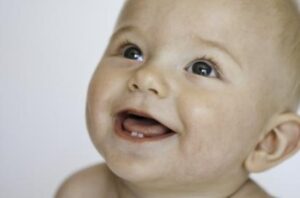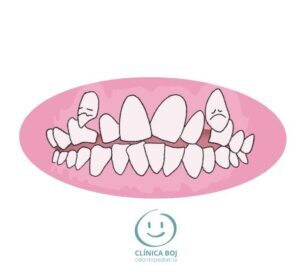Baby bottle caries: what is it, symptoms and causes.
What is baby bottle tooth decay?
Baby bottle caries occurs when a child’s teeth are exposed for long periods of time to sugar water or liquids. The academic name is early childhood caries (ECC).
Going to bed with a bottle may risk development of a destructive process by bacteria in baby teeth. Upper front teeth are the most affected ones.
It is currently the most common chronic disease in young children. Moreover, early childhood caries is observed with a high prevalence in Spanish schools.
How does the AAPD define early childhood caries?
Early Childhood Caries (ECC) is defined by the American Academy of Pediatric Dentistry (AAPD) as:
(a) the existence of one or more caries lesions (cavitated or non-cavitated),
b) lack of tooth; lost due to caries, or
c) teeth surfaces healed by caries, on any deciduous tooth of a child 71 months of age or younger.
That is, it refers to pre-school children between birth and 71 months of age (until 3 years of age).
How do I know if my baby has baby bottle tooth decay?
ECC can begin very soon after the teeth come out, reason why a gently wipe of our baby‘s teeth and gums with a clean gauze or a dump washcloth to remove plaque is convenient. It usually affects the upper primary or baby teeth (maxillary incisors). It will appear on smooth surfaces, buccal and lingual sides of incisors. We can also see them in between teeth (interproximal caries).
The speed of progression is very high and we can observe teeth destruction very rapidly. To look at it, the upper lip of babies should be lifted from time to time.
Ideally, it is necessary to visit the pediatric dentist early in order to have controls. He or she will design and explain the prevention guidelines at each stage for the baby’s oral care development.
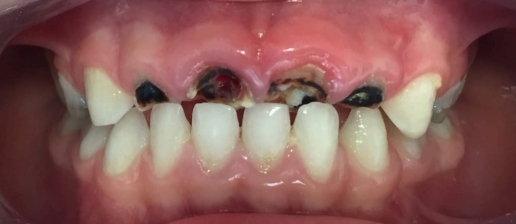
What are the causes of baby bottle caries?
Among the associated risk factors are:
-Type and frequency of carbohydrate intake. Increased risk to oral health with a highly cariogenic diet, i.e., a high content of free sugars.
-The use of a bottle with liquids containing sugar for a long time and many times a day. In addition, the baby’s habit of sleeping with the bottle without removing it once he/she falls asleep.
-Also when there is a lack of adequate dental care, and the toothpaste is not used with the necessary concentration of fluoride.
-Breastfeeding on demand and for a prolonged period of time on its own may not always generate ECC. But, if breast milk is combined with the intake of other carbohydrates in the diet and in the absence of oral hygiene, it may be highly cariogenic.
–Presence of bacterial plaque. Absence of oral hygiene habits.
-The quantity and quality of saliva present in the baby’s gums, especially if we take into account that its fluid decreases during sleep (the saliva bathing the teeth while sleeping). Undoubtedly, this situation can lead to a highly cariogenic environment if good hygiene is not managed at bedtime.
-Tooth eruption-calcification pattern: a newly erupted tooth is more vulnerable to acid effect.
-Structural alterations of the hard tissues of the tooth, for example, enamel hipoplasia or hypocalcification
–Lack of fluoride in the oral environment. Need to use the appropriate amount of fluoride due to the age and individual dental caries risk of each child.
–Patients with physical and/or mental disabilities due to the difficulty in performing adequate hygiene.
–Socioeconomic level that hinders access to information and necessary hygiene products.
How to prevent baby bottle tooth decay?
Prevention consists of avoiding leaving the baby with bottles in the mouth with sugary liquids. Especially at bedtime, it is more convenient to leave a bottle with water rather than milk.
Remember also that the bottle teat can cause orthodontic alterations, as can the pacifier, if sucked for many hours a day. Crossbites, openbites and overjets are some of the most common consequences.
How to treat baby bottle caries?
For sure, the way to cure each caries in baby teeth will depend on the type of caries.
Therefore, if a cavity develops that does not affect the pulp or nerve of the baby tooth, the process we use for healing is called restoration after removal of diseased tissue with bacteria produced by caries.
On the other hand, if the appearance of caries affects the nerve, it would be a pulpotomy or pulpectomy or endodontics for children, depending on the amount of infected tissues in the internal structure of each tooth.
However, the best option in case of doubt is always to take the baby for regular check-ups at the children’s dental clinic where the pediatric dentist specialized in babies will guide the parents in all the necessary aspects. Parents will start hygiene with a damp washcloth or they also can cleanse gums and teeth with a clean gauze.
This way, children’s dental health will be properly monitored and other problems can be detected in a timely manner.
References:
